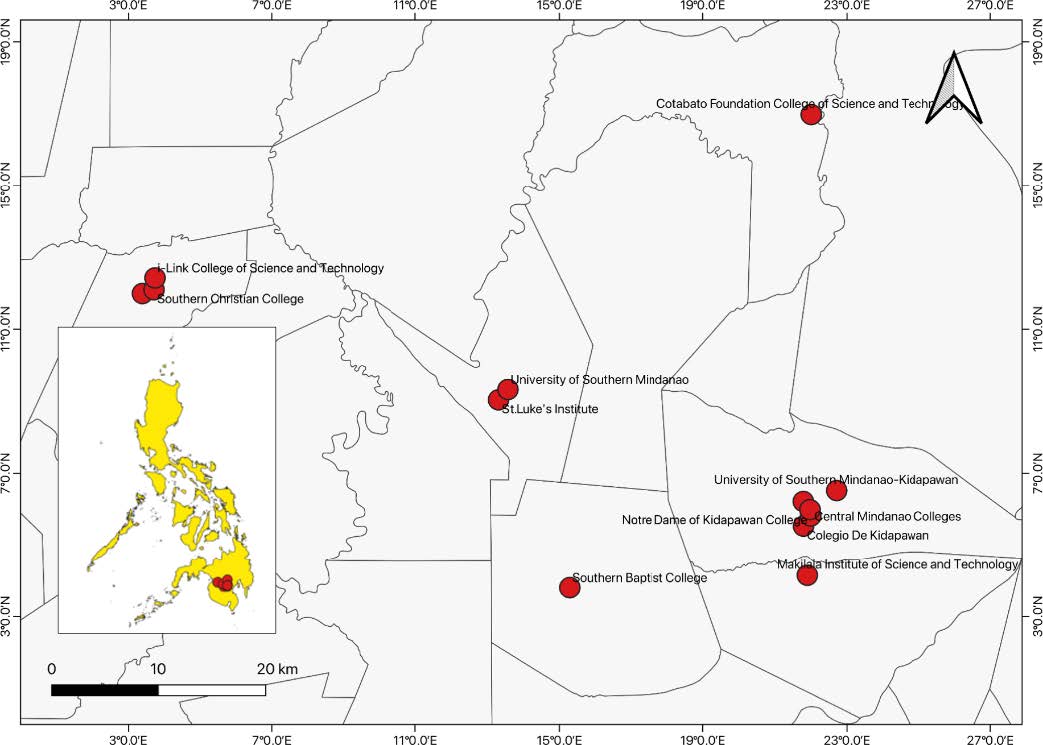Electronic Waste (E-Waste) Management of Higher Education Institutions in South Central Mindanao, Philippines 10.32526/ennrj/20/202200053
Main Article Content
Abstract
E-waste management is undoubtedly one of the important environmental concerns at present because the dependence on electronic devices has increased. There have been policies, legal provisions, and advocacy undertakings educating and introducing ways to manage and properly dispose of e-waste in the region yet there is no clear understanding of these practices, particularly in Higher Education Institutions (HEIs). The present study evaluates the e-waste management implementation of HEIs in South Central Mindanao, Philippines using survey questionnaires and in-depth interviews with 13 HEI representatives. The surveys showed that 39% of the HEIs have an annual budget of less than PhP100,000.00 (USD 1,950). Moreover, 23% of HEIs annually purchase 10-60 units of Information and Communication Technology (ICT) equipment. E-waste management among HEIs shows that 53.8% of ICT and electronic devices end up in landfills and 23.1% in informal sectors like junk shops. It can be noted that the yearly generation of e-waste among HEIs highly impacts the rise in the usage of IT equipment and electronic devices. Lack of awareness, e-waste disposal facilities, priorities, audit resolution and procedure and no definite legislation or laws among HEIs are the main challenges for e-waste management in the region. This study prompts mainstream e-waste management in HEIs and enlightens the public about appropriate strategies to address this issue. Furthermore, the findings of this study can be useful in formulating national and regional e-waste management plans and programs.
Article Details

This work is licensed under a Creative Commons Attribution-NonCommercial 4.0 International License.
Published articles are under the copyright of the Environment and Natural Resources Journal effective when the article is accepted for publication thus granting Environment and Natural Resources Journal all rights for the work so that both parties may be protected from the consequences of unauthorized use. Partially or totally publication of an article elsewhere is possible only after the consent from the editors.
References
Agamuthu P, Kasapo P, Nordin NA. E-waste flow among selected institutions of higher learning using material flow analysis model. Resources, Conservation and Recycling 2015;105: 177-85.
Alam ZF. The assessment of the e-waste management generated from cellular phones, laptops, and personal computers in the Philippines. Manila Journal of Science 2016;9:27-42.
Carisma B. Drivers of and Barriers to E-Waste Management in the Philippines [dissertation]. Sweden: Lund University; 2009.
Celestial RG, Mauricio ED, Tan LB, Gumaru JC, Mondragon RO. E-waste management in the Philippines. Agro-Industrial Waste Management 2018;5(1):1-2.
Cucchiella F, D’Adamo I, Koh SL, Rosa P. Recycling of WEEEs: An economic assessment of present and future e-waste streams. Renewable and Sustainable Energy Reviews 2015; 51:263-72.
Gutierrez R, Agarrado G. New age trade agreements and their possible contribution to toxic trade. Environmental Law Network International 2011;2:Article No. 46.
Islam MT, Dias P, Huda N. Young consumers’e-waste awareness, consumption, disposal, and recycling behavior: A case study of university students in Sydney, Australia. Journal of Cleaner Production 2021;282:1-18.
Kiddee P, Naidu R, Wong MH. Electronic waste management approaches: An overview. Waste Management 2013;33(5): 1237-50.
Kitila AW, Woldemikael SM. Waste electrical and electronic equipment management in the educational institutions and governmental sector offices of Addis Ababa, Ethiopia. Waste Management 2019;85:30-41.
Ko CO, Tun Y, Lwin NH, Moe T, Eaindray J. Estimation of the recyclable waste amount collected by informal recycling shops: Case study in Nay Pyi Taw, Myanmar. Environment and Natural Resources Journal 2021;19(2):103-11.
Lundgren K. The Global Impact of E-Waste: Addressing the Challenge. Geneva, Switzerland: International Labour Organization; 2012.
Oteng-Ababio M. Electronic waste management in Ghana-issues and practices. In: Curkovic S, editor. Sustainable Development-Authoritative and Leading-Edge Content for Environmental Management. IntechOpen; 2012. p. 149-66.
Peralta GL, Fontanos PM. E-waste issues and measures in the Philippines. Journal of Material Cycles and Waste Management 2006;8(1):34-9.
Ponghiran W, Charoensaeng A, Khaodhiar S. The environmental impact assessment of gold extraction processes for discarded computer RAM: A comparative study of two leaching chemicals. Journal of Material Cycles and Waste Management 2021;23(4):1412-22.
Raghupathy L, Krüger C, Chaturvedi A, Arora R, Henzler MP. E-waste recycling in India: Bridging the gap between the informal and formal sector. Hamburg, Germany: International Solid Waste Association, World Congress; 2010.
Rautela R, Arya S, Vishwakarma S, Lee J, Kim KH, Kumar S. E-waste management and its effects on the environment and human health. Science of the Total Environment 2021; 773:Article No. 145623.
Robinson BH. E-waste: An assessment of global production and environmental impacts. Science of the Total Environment 2009;408(2):183-91.
Rosete MA, Valdez KG. Assessing the level of awareness of electronic waste among the business economics majors of the University of Santo Tomas College of Commerce and Business Administration. Review of Integrative Business and Economics Research 2018;7(4):216-37.
Sasaki S. The effects on Thailand of China’s import restrictions on waste: Measures and challenges related to the international recycling of waste plastic and e-waste. Journal of Material Cycles and Waste Management 2021;23(1):77-83.
Tiwari D, Dhawan NG. E-waste management: An emerging challenge to manage and recover valuable resources. International Journal of Environmental Research and Development 2014;4(3):253-60.
Williams E, Kahhat R, Allenby B, Kavazanjian E, Kim J, Xu M. Environmental, social, and economic implications of global reuse and recycling of personal computers. Environmental Science and Technology 2008;42(17):6446-54.

